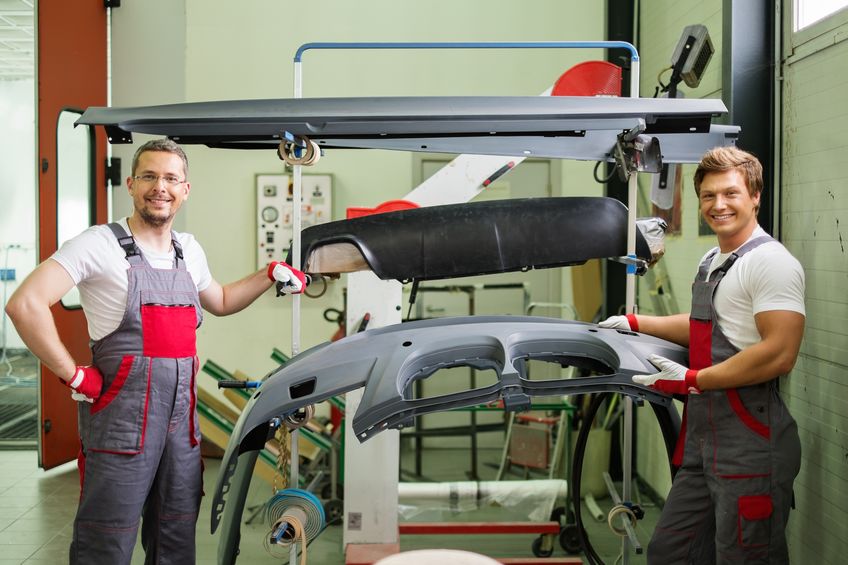Collision Repair Terms Everyone Should Know
Insurance company stats say that the average driver will file a claim every 18 years. So, odds are, by 36 you will have had at least one car crash. Of course, we hope that everyone stays collision-free. But just in case, it’s helpful to learn some of the most basic collision repair terms. This way, you’ll have a heads up when it comes to understanding ‘repair shop lingo’ and can make all the best choices when having your vehicle repaired.
Collision Repair Terms:
Appraisal – A written estimate that tells how much a vehicle is worth. A damage appraisal is completed by a body shop/insurance adjuster. It also provides a baseline of what repair work needs to be done.
After Market Parts – Also know as imitation, copy, and non-OEM parts, these collision repair terms all represent one thing: new parts for your vehicle that were made by someone other than your car’s manufacturer. These parts are usually much cheaper but don’t always fit or perform the like original manufacturer parts.


Blue Book – Also know as the Kelly blue book, this is used to determine the standard value of a vehicle.
Casualty – Loss or liability that happens as a result of a crash.
Deductible – The amount of money that you (the owner of the vehicle) has to pay before the insurance company begins covering repair costs.
Detailing – Professional cleaning of the inside and outside of a vehicle.
Depreciation – How much value a vehicle loses due to wear, tear, or time.
Direct Repair Shop – Part of a direct repair program, a direct repair shop is a preferred auto body shop of an insurance company. Pros—they work directly with the insurance company. Cons—They often use aftermarket parts.
Estimate – A written guess of the following: damage details, cost of the repairs, and time of completion. Appraisal and estimate are two commonly confused collision repair terms. Keep in mind that appraisal show “what is” where an estimate shows “what will be.”
Exclusion – A repair not covered because it is excluded by an insurance company. Common examples include normal wear and tear and intentional acts that lead to damage.
FEA – This is an acronym used to shorten the repair term “front end alignment.” It is often found on an estimate instead of the full phrase.
Remove and Install (R&I) – The practice of removing a part during collision repair, but then reinstalling it later on. This is common, especially when a vehicle is being painted.
Remove and Replace (R&R) – The collision repair terms R&I and R&R are often confused. With R&R the parts that are removed are often damaged, so they are not reinstalled. Instead, they are replaced with new parts.
Repair Authorization – Permission that is given by the owner of an automobile when it is time for repairs to be made.
Repair Order – Used by an auto body shop, this document tracks a few things. The most common being what repairs have taken place, the parts used, materials used, and how much time it took.
VIN – An acronym for the repair term, vehicle identification number, A VIN is the unique number that identifies a vehicle. Repair shops use it to find out important information like what parts will fit a particular car or truck.
At Orlando Auto Body, professionals are always available to help you understand the repair process whether you know repair terms or not. If you’ve been in a collision, call us today at (480) 844-4858. We will do our very best to make your collision repair as painless as possible.

